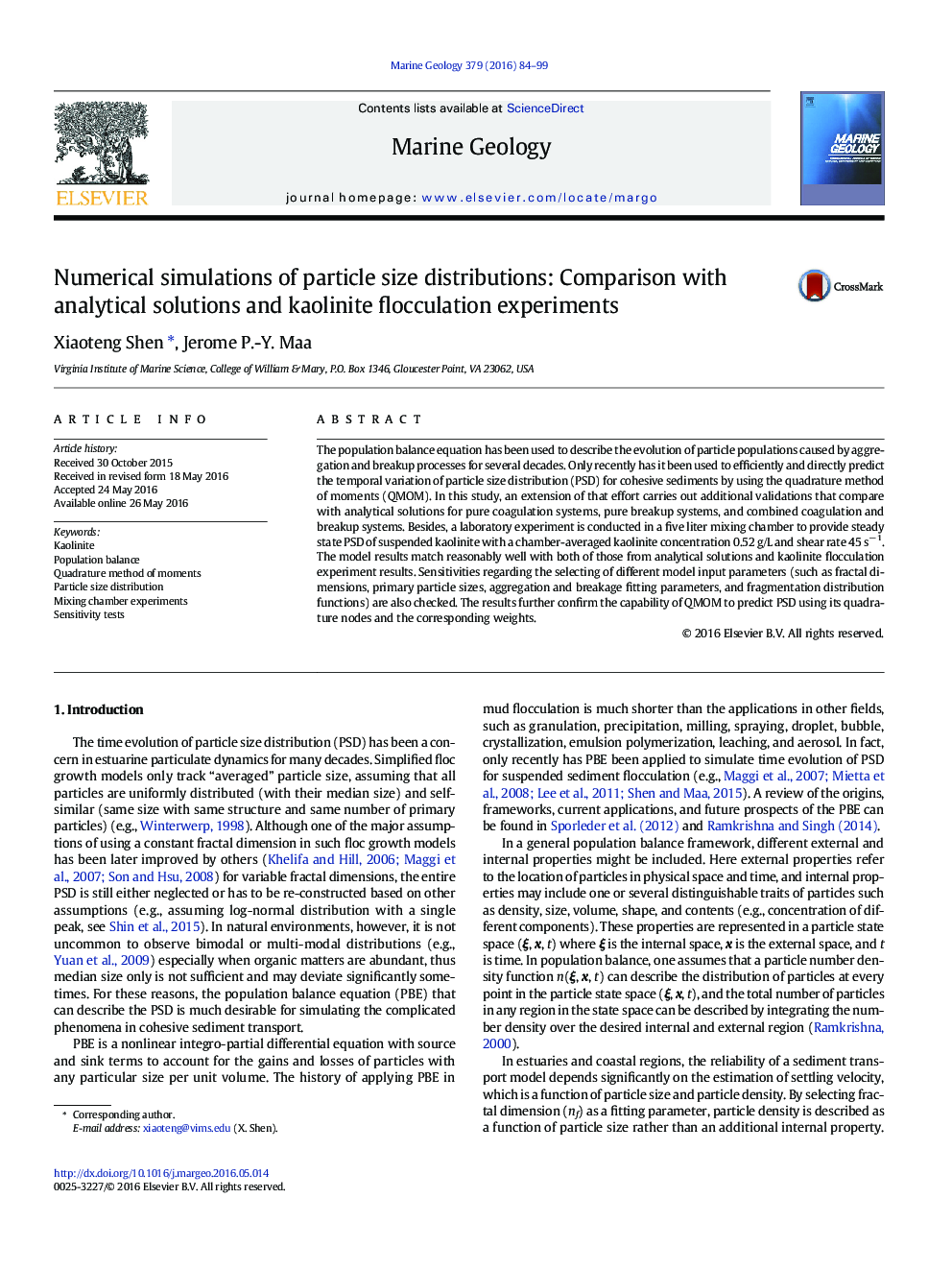| کد مقاله | کد نشریه | سال انتشار | مقاله انگلیسی | نسخه تمام متن |
|---|---|---|---|---|
| 6441358 | 1639073 | 2016 | 16 صفحه PDF | دانلود رایگان |
- Population balance equation is solved using quadrature method of moments with seven or eight size classes
- Model results match well with analytical solutions for different kernels that describe different flocculation processes
- Model results also match the measured floc size distribution of kaolinite in a mixing chamber
- Different primary particle sizes, fractal dimensions, and fragmentation distribution functions all affect model results
- While the same C1/C2 produces the same steady state results, different absolute C1 & C2 change the flocculation rate
The population balance equation has been used to describe the evolution of particle populations caused by aggregation and breakup processes for several decades. Only recently has it been used to efficiently and directly predict the temporal variation of particle size distribution (PSD) for cohesive sediments by using the quadrature method of moments (QMOM). In this study, an extension of that effort carries out additional validations that compare with analytical solutions for pure coagulation systems, pure breakup systems, and combined coagulation and breakup systems. Besides, a laboratory experiment is conducted in a five liter mixing chamber to provide steady state PSD of suspended kaolinite with a chamber-averaged kaolinite concentration 0.52 g/L and shear rate 45 sâ 1. The model results match reasonably well with both of those from analytical solutions and kaolinite flocculation experiment results. Sensitivities regarding the selecting of different model input parameters (such as fractal dimensions, primary particle sizes, aggregation and breakage fitting parameters, and fragmentation distribution functions) are also checked. The results further confirm the capability of QMOM to predict PSD using its quadrature nodes and the corresponding weights.
Journal: Marine Geology - Volume 379, 1 September 2016, Pages 84-99
